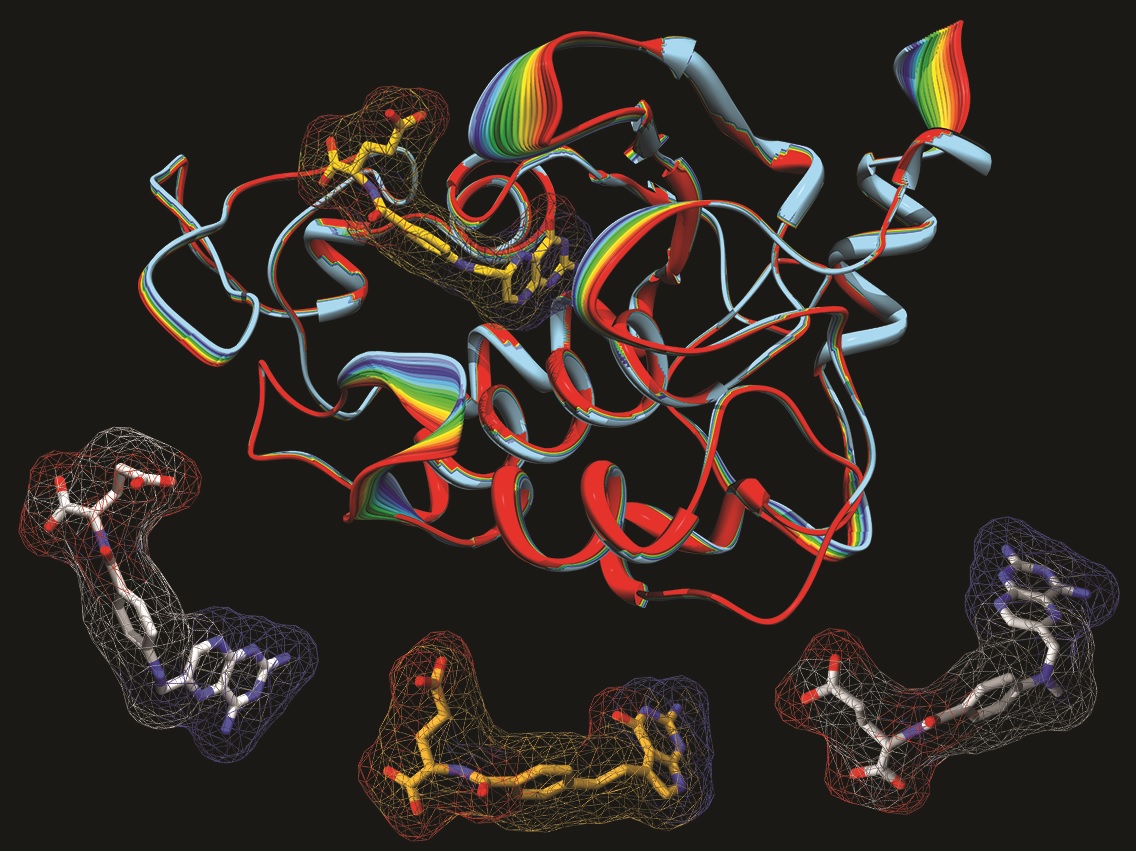cell growth – NIH Director's Blog (original) (raw)
Human Folate Receptor Model May Aid Antifolate Drug Design
Posted on August 22nd, 2013 by Dr. Francis Collins
Caption: A model of the human folate receptor (top) and three antifolate drugs used in chemotherapy: aminopterin (left), pemetrexed, and methotrexate (right).
Credit: Charles Dann III / Courtesy of Indiana University
Vitamin B9 or folic acid, which is found in dark green leafy vegetables, is essential for cells to grow and divide rapidly—as they do in a growing embryo. This is why women are advised to take folic acid supplements before conception and during pregnancy: inadequate folate raises the risk of brain and spinal cord defects. But while folic acid is key to normal cell growth, rapidly dividing cancer cells also have a tremendous appetite for this vitamin.
Drugs called antifolates have been used for decades in chemotherapy to starve cancer cells of folate, which can help kill the tumor. These drugs have also been used to treat inflammatory diseases like rheumatoid arthritis and Crohn’s disease. But many of these drugs have nasty side effects because they also enter normal healthy cells, depriving them of this essential compound.
New Understanding of a Common Kidney Cancer
Posted on July 9th, 2013 by Dr. Francis Collins
Caption: Histologic image of clear cell kidney cancer
Slide courtesy of W. Marston Linehan, National Cancer Institute, NIH
Understanding how cancer cells shift into high gear—what makes them become more aggressive and unresponsive to treatment—is a key concern of cancer researchers. A new study reveals how this escalation occurs in the most common form of kidney cancer: clear cell renal cell carcinoma (ccRCC). The study shows that ccRCC tumors acquire specific mutations that encourage uncontrollable growth and shifts in energy use and production [1].
Conducted by researchers in the NIH-led The Cancer Genome Atlas (TCGA) Research Network, the study compared more than 400 ccRCC tumors from individual patients with healthy tissue samples from the same patients. Researchers were looking for differences in the gene activity and proteins in healthy vs. tumor tissue.
Posted In: Science
Tags: ccRCC, cell growth, chemotherapy, clear cell renal cell carcinoma, epigenome, genes, glycolysis, kidney cancer, mutations, TCGA, The Cancer Genome Atlas Research Network, therapy, tumor, VHL

